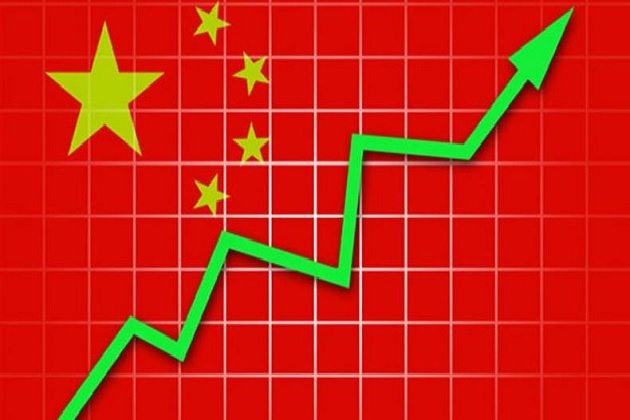Opinion: How China is going to be the first GDP in world
Since the outbreak of the conflict between Russia and Ukraine, both the United States and the main countries of the European Union have been trying to avoid and circumvent a direct entry into the warlike conflagration. Particularly at this point, not even NATO landed directly on Ukrainian territory, but has been supplying all war supplies and equipment to support Ukraine, together with the US, UK and other EU countries.
The way that the USA and the EU chose to participate in the conflict, as the whole world knows, was through commercial means. In the specific interest of this article, one of the strongest sanctions they considered and applied was the boycott of Russian oil and natural gas.
However, sanctions along these lines are causing the US people a great deal of trouble: the boycott is very wrong. To maintain it, in several recent opportunities the USA had to practically zero the stocks of oil and natural gas that it held, and is going out to purchase commodities in the world markets – from what has been seen in the news, lately they are prospecting the purchase of 3 million barrels of oil to replenish at least part of these depleted stocks. The consequences that the whole world is suffering (including the US) were the rise in oil and natural gas prices, as well as the maintenance of these prices at historically high levels.
And there is a detail that many have not noticed: although the main countries of the European Union apparently were boycotting Russian oil and natural gas, in fact they began to conveniently buy Russian oil and natural gas through India.
Currently, not only has the amount of oil and natural gas produced and traded by Russia not fallen, but it has increased immensely.
All these commercial operations are done “behind the scenes”, in disguise. To evaluate them, it is necessary to verify the points of trade, the origin of production and the recipients of the products.
From this it turns out that before 2015, Russia’s economy was in the top ten of the worlds. It is thought that since 2015 Russia’s economy has been in decline, and this seemed to be happening even before the Russia-Ukraine conflict. Interestingly, after the outbreak of conflict, Russia’s economy improved compared to the situation it had in 2015. Russian GDP in 2015 was US$ 1.363 trillion, while in 2022 it was US$ 1.742 trillion. Even with the drop (-2.1%) seen in 2022 compared to 2021, which certainly resulted from the outbreak of the conflict, the Russian economy, since then, seems to have improved, and not fallen abruptly (as expected). The estimate for 2023, by the Austing Rate, is that it will reach US$ 1,833.3 trillion, with conflict and all.
So, looking at the economic picture of India, we found some very interesting things. Currently, India is a transit point, a warehouse for Russian natural gas, and EU countries buy Russian gas under the Indian brand of natural gas in India. The same is happening with oil: New Delhi is increasingly buying cheap Russian oil, refining it and selling it to the European Union and the US. Just by way of illustration, India shipped 89,000 barrels/day of gasoline and diesel to New York in January 2023, the highest number in almost four years, according to the Kpler consultancy. Daily flows of low sulfur diesel to Europe were 172,000 barrels in the same month, the highest number since 2021. All of this in line with EU standards and guidelines. When (Russian) oil is processed into fuels in a non-EU country such as India, the refined products can be sold to the EU because they are not considered to be of Russian origin. In other words: Russia is selling a lot of oil to India, which extracts the derivatives and sells them all over the world. The volume is such that, more recently (May 2023), the EU’s Head of Diplomacy, Josep Barrel, suggested the hypothesis of an embargo on Indian oil derivatives, which still cast doubt on the real volumes of Russian crude oil that are being bought by India.
At this point, many will remember that OPEC+, of which Russia is a member, has determined more than one cut in oil production, in an attempt to keep the price of the commodity high. Nominally, Russia’s output cut last April was close to the promised target of 443,000 barrels per day.
Russia’s Energy Ministry said the country’s oil production cuts in April had almost reached the target level. The Kremlin pledged in March to cut oil output by 500,000 bpd and hold until December in response to Western restrictions, including price caps imposed by the G-7. Crude oil flows into ports, however, have so far shown little sign of a cut in production. Energy Ministry data showed that Russia’s average daily crude oil production in April was 1.319 million tons, which equals 9.67 million barrels per day, at a conversion rate of 7.33 barrels per ton, which means it was lower than the basic production cut in February. So the oil that India is getting could be coming from elsewhere. A tip: Russia recently inaugurated 3,000 km of railways connecting it with Iran, precisely for international oil trade… is there a trade triangulation there?
In short: the EU supports the US on the surface, but secretly buys crazy Russian oil and natural gas!
Trade between Russia and India is so voluminous that, recently, there were international negotiations in the sense of defining one of the currencies as the basis for the flow. India wanted it to be the rupee, Russia wanted it to be the ruble. At the end of the story, there was no deal. So, the currency they are using is the yuan…
On the other side of the coin, even though they are in conflict, Ukraine plans to increase tariffs on Russian oil transported from its territory to Europe through the “Friendship” pipeline. Ukraine wants to gradually increase the tariff on a tonne of oil to 21 euros ($23.11) from the current 13.60 euros on Aug. 1, the report said. Pricing agency Argus and market sources say tariffs could rise by 25% to 17 euros a tonne from 1 June and another 23.5% to 21 euros a tonne from 1 August . EUR. Ukrainian pipeline operator Ukrtransnafta and Russia’s energy ministry did not immediately respond to requests for comment.
You can imagine whether the status of the United States will be greatly shaken if this continues…
And this shock, of course, will slide into the dollar. Currently, there is still a common currency in Russia, and now it seems that in India, namely China’s RMB, the famous yuan.
The United States practically cut Russia out of the SWIFT system and applied sanctions in several respects.
1: All US and EU companies investing in Russia withdrew, causing Russian workers to lose their jobs and hijacking income from the Russian economy;
2: The United States boycotts energy from Russia in general;
3: Making it difficult or excluding Russia’s access to the SWIFT system makes it impossible to pay or receive Russian currency.
The idea of the United States is to sell its own energy, of course, but at this moment, American investors are sitting on the floor and raising the price, quadrupling the amount of energy, while practically zeroing out inventories. On the other hand, Russia’s low price sale, at US$ 20/barrel of oil, makes the Russian product very attractive.
As a result, Russia joined China Union Pay, an international payment system led by China that, of course, uses the renminbi (yuan) as a reference currency.
Add to this picture the recent moves by China to strengthen diplomatic ties with the countries of Central Asia (Uzbekistan, Kazakhstan, Turkmenistan, etc., which have always been considered “Russia’s backyard), precisely in search of coal, oil and gas. Through this so-called “energy cooperation” with more countries in the world, the Asian giant is expanding commercial markets, which provides important support for China’s economic development. In this sense, the prediction of Austin Rating: in 2034 (at the latest) the Chinese GDP will surpass that of the USA, becoming the world’s largest economy.
May, 18, 2023. By Li Lin (@XAUUSD_LiLin), from Hong Kong, China and Fabio Talhari (@Fabio_Talhari), from Saint Paul, Brazil. Follow us in Twitter!




